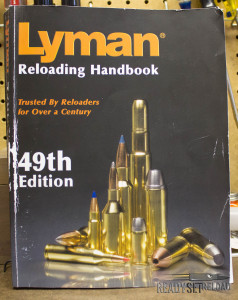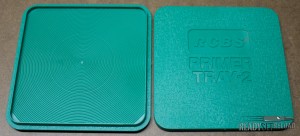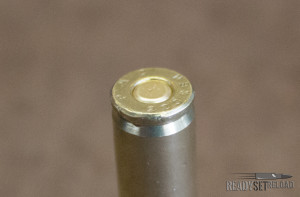Priming Brass
Part 4a in this series discusses priming brass. From this point on I would highly recommend wearing safety glasses as primers and powders are extremely explosive (obviously). I’ve read several forum and blog posts about people priming brass or using powder incorrectly and it explodes in their face. At least if your wearing safety glasses your chance of losing your eyesight significantly decreases.
In an earlier post I mentioned that I live close to both a Bass Pro Shop and a Cabela’s. Because of this, I’ve found it’s the best place to purchase primers and powder. The reason for this is when you have these items shipped to you they fall under the Hazardous Materials Transportation Act and require a HASMAT fee. Unless you are buying massive amounts of powder and/or primers its likely cheaper to avoid paying that fee (around $20) and buy from a brick and mortar store. I was at a gun show a couple months ago and found a vendor there that I can purchase powder directly from and he was even cheaper than the sales that the brick and mortar stores run. Your mileage may very.
What brand primer should I purchase? This is a question that I had a hard time finding a good answer. There are lots of answers

Lyman Reloading Handbook
to this question but I narrowed my decision down to three “guidelines”. The first was safety. I found that the manufacturers produce primers that ignite when struck at different velocities. Federal and Winchester are brands that fire with the least velocity. Not that these aren’t safe, but as a beginner reloader I wanted something that fired with more force. The thought here was that I wanted to avoid a potential “slam fire”. The second requirement that I had was try to stick to the handloading manual that is providing your load data. The Lyman Reloading Handbook that I use specifies which primers they use in their loads. The third and final guideline that I use is cost. I can’t find a definitive answer on which primer is best; Lyman doesn’t even use multiple primers in their load data they publish. I assume, that there is negligible difference between manufacturers which is why I treat this guideline as the most important. As soon as my local Cabela’s ran a sale on bricks (1000 ct) Sellier & Bellot primers I jumped and purchased a few based on what I was reloading. This leads into what size primer should I purchase?
There are multiple sizes of primers that you can purchase. The proper primer size depends on what caliber ammunition you are loading. This can be found in the Lyman Reloading Handbook. You should never substitute one size for another! Sizes range from Small Pistol to Large Rifle Magnum. As an example, 223/556 uses a Small Rifle sized primer.
Like everything else in handloading there are multiple methods for priming brass. I use my press. If you have been using the same equipment that I’ve been in each part in my guide, this method doesn’t require you to purchase anything new except a priming tray. As always, I’ve linked the exact item that I use at the end of each post.

RCBS Primer Tray
This tray isn’t required but makes loading primers into the priming arm of your press much easier. Here are the steps to load the primers in the tray:
- Take the cover off the priming tray which exposes the groves.
- Remove the cardboard sleeve from a tray of primers.
- Place the priming tray grove side down on the top of the tray of primers.
- Flip both the priming tray and primers upside down so the primers lay on the priming tray grooves.
- Agitate the priming tray until all the primers are facing the same direction.
Next up is actually placing the primer in your brass. Here are the steps:
- Place a shell holder in the ram of your press.
- Run the ram up and flip the priming arm in the ram groove then lower the ram. As you lower the ram the priming arm will be exposed through the shell holder.
- Take a primer from your primer tray and place it in the priming arm of your press.
- Run the ram up so the priming arm is no longer exposed through the shell holder.
- Place a piece of brass in your press.
- Run the ram down slowly and the primer will be inserted into your brass.
- Remove brass and make sure primer is fully seated.
- Place primed brass in reloading tray.

Primer

Frankford Arsenal Shell Holder
Using a press to prime your brass requires care. You need to apply the right amount of force to fully seat the primer. Too much force will crush the primer. Too little force will cause the primer not to seat all the way which you do not want. This is dangerous because if the primer is left exposed and the round is completed the primer could accidentally be struck and the cartridge could fire. Lastly, if you try priming your brass too fast there is a chance that the press could cause the primer to ignite causing potential injury. Once you prime about 100 pieces you should get the hang of this; its not very hard. Eventually you will get the “feel” and know when the primer is seated all the way. When in doubt, take a straightedge and lay it against the base of the brass. If the primer is touching the straightedge then then its not seated all the way. After I prime each piece of 223/556 brass I place them in my Frankford Arsenal #2 Reloading Tray. The link to this item is at the end of this post. In the next post I will discuss the powder tools that I use. See you there!
Equipment discussed in this post:

